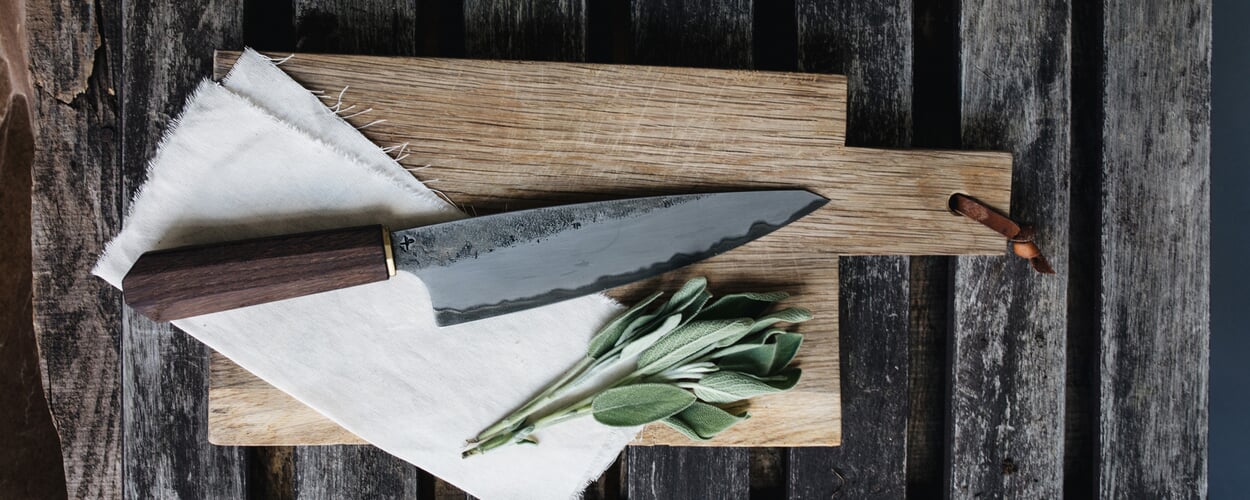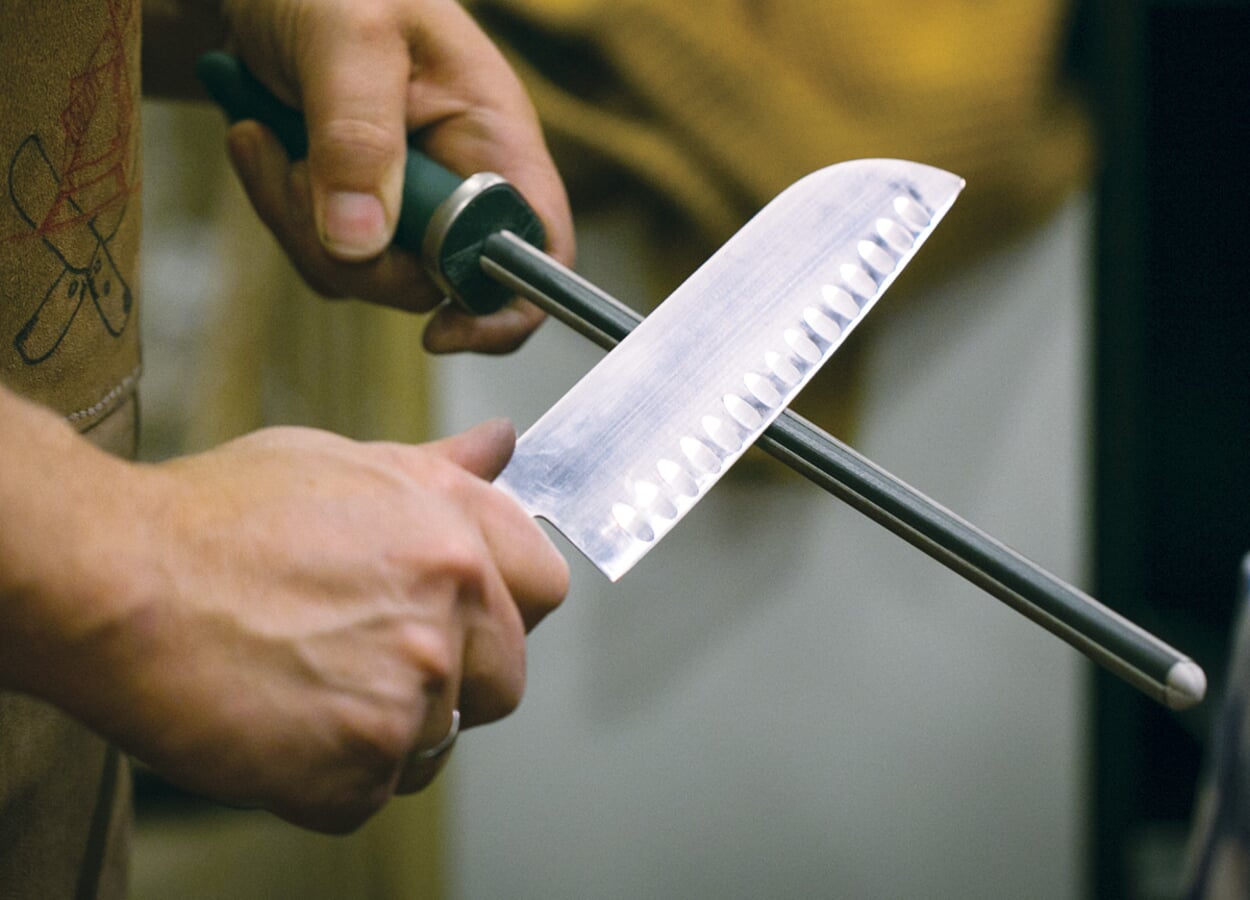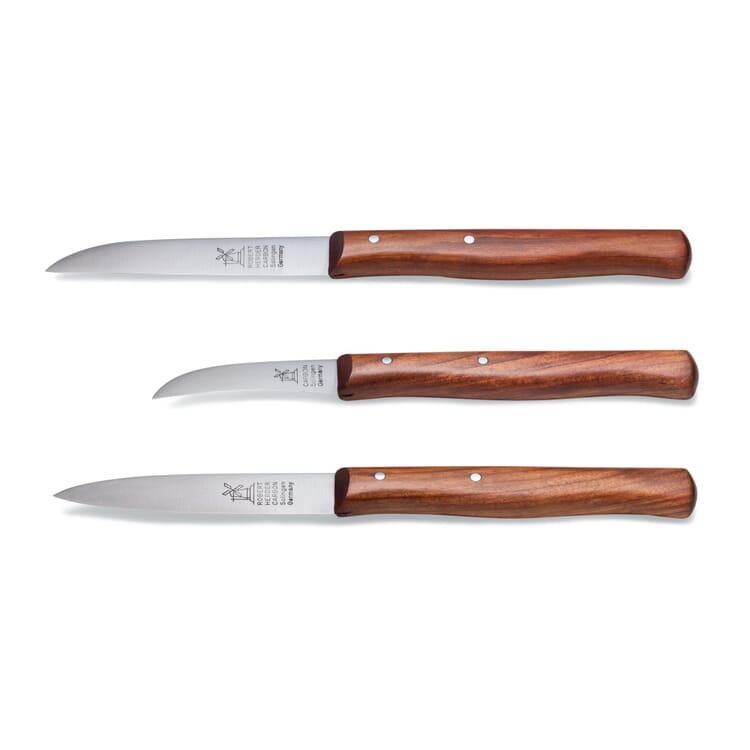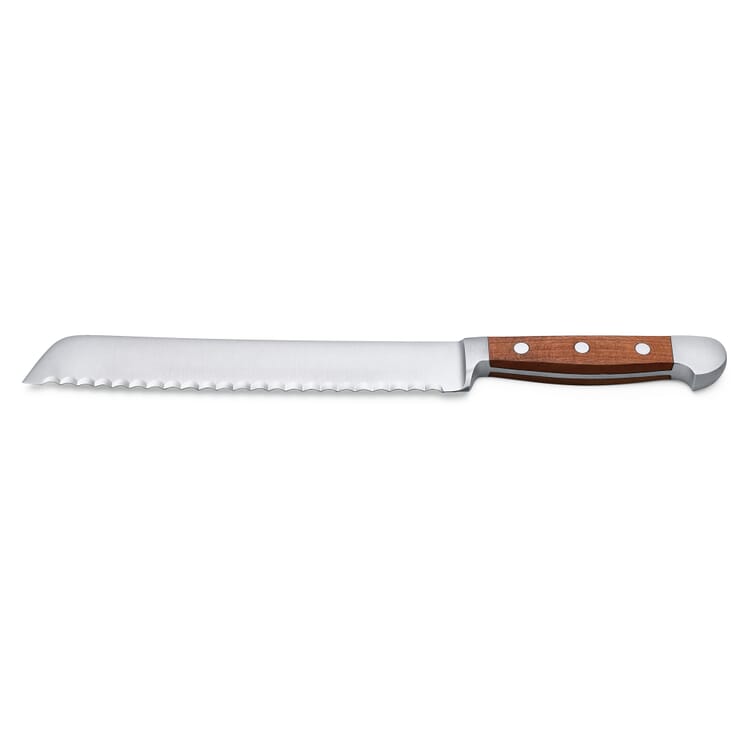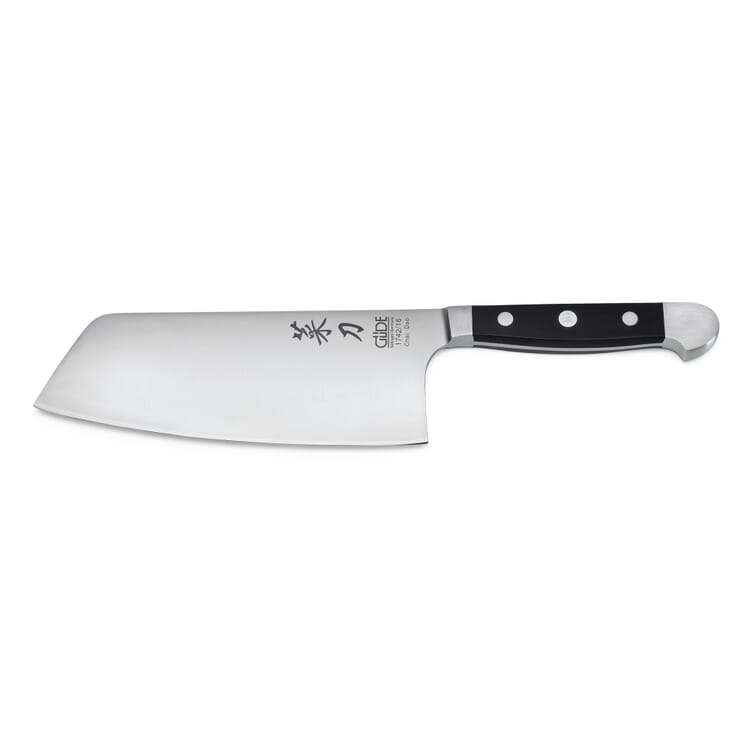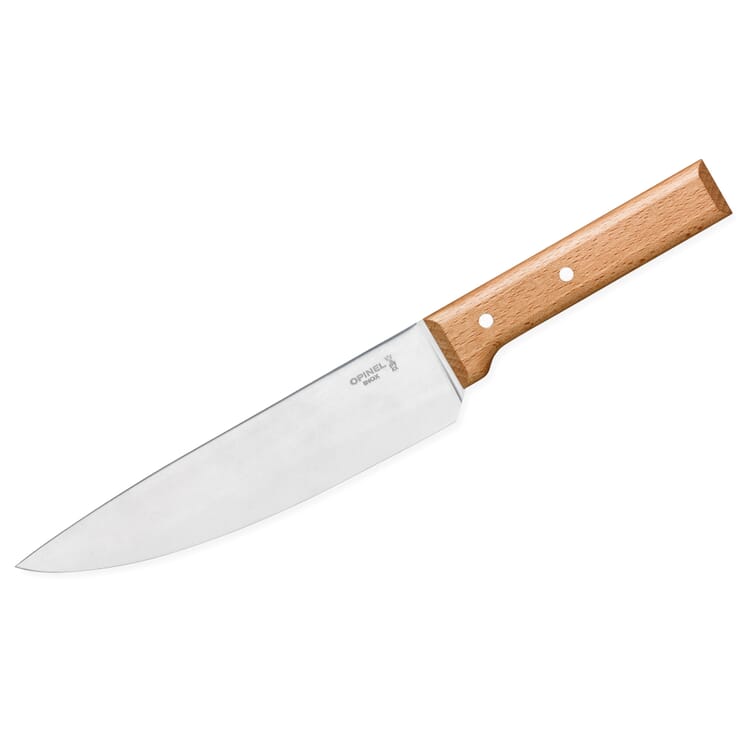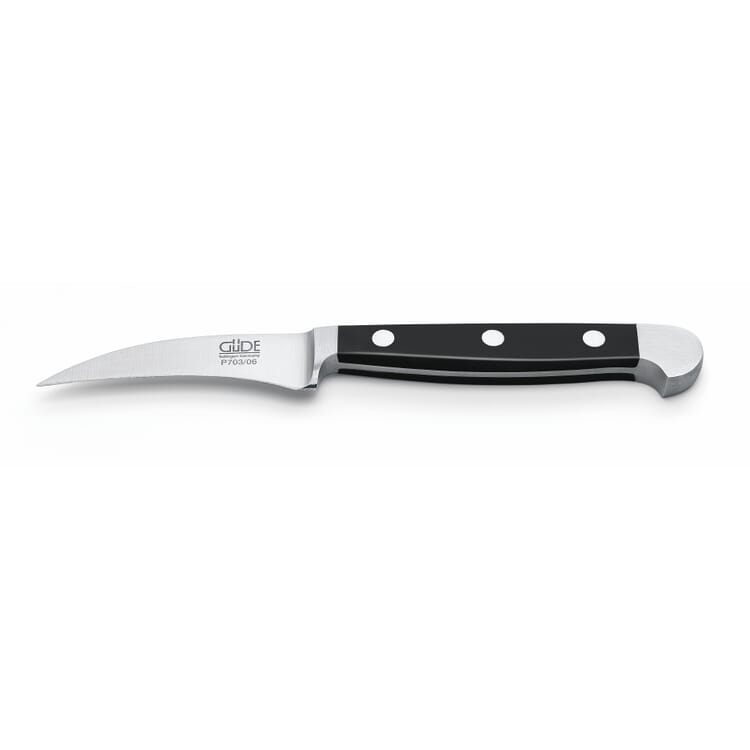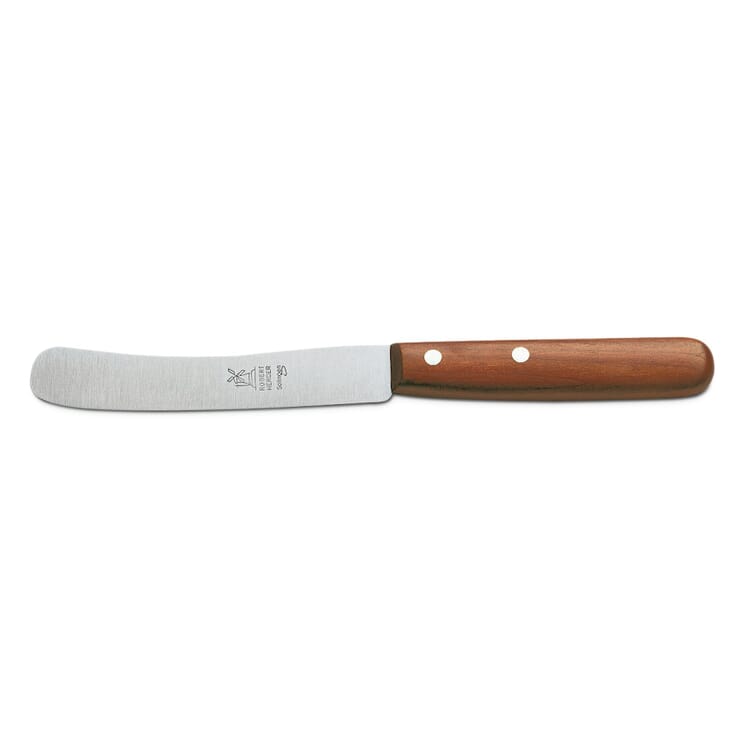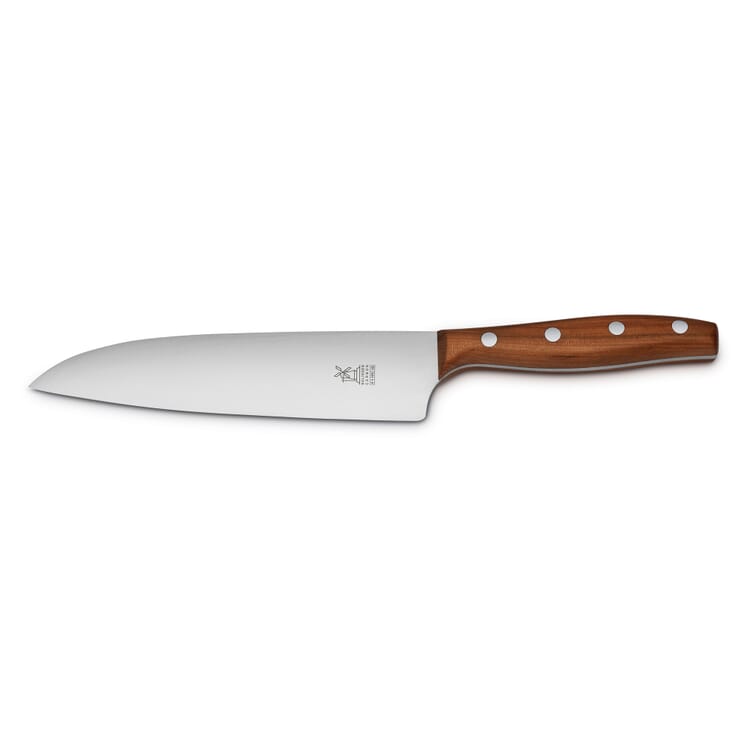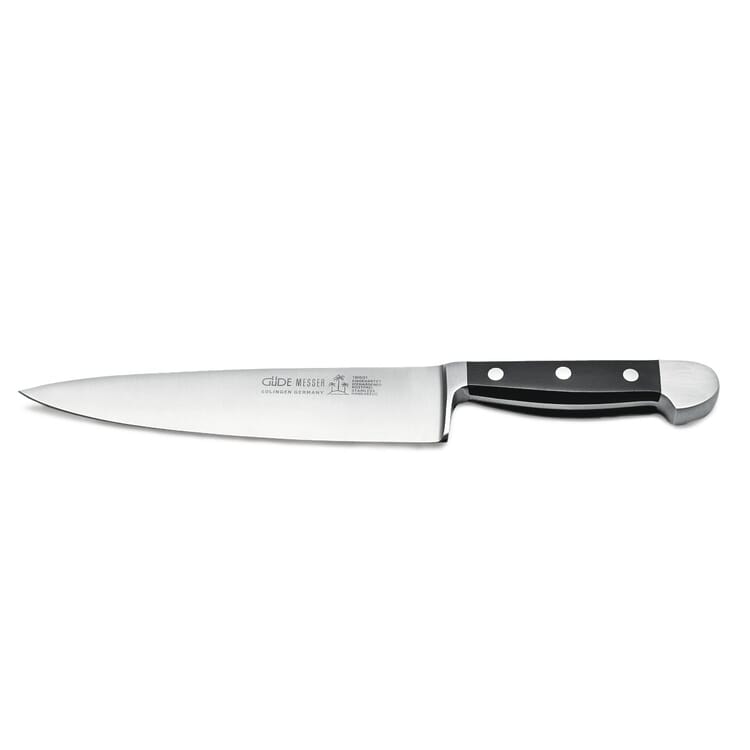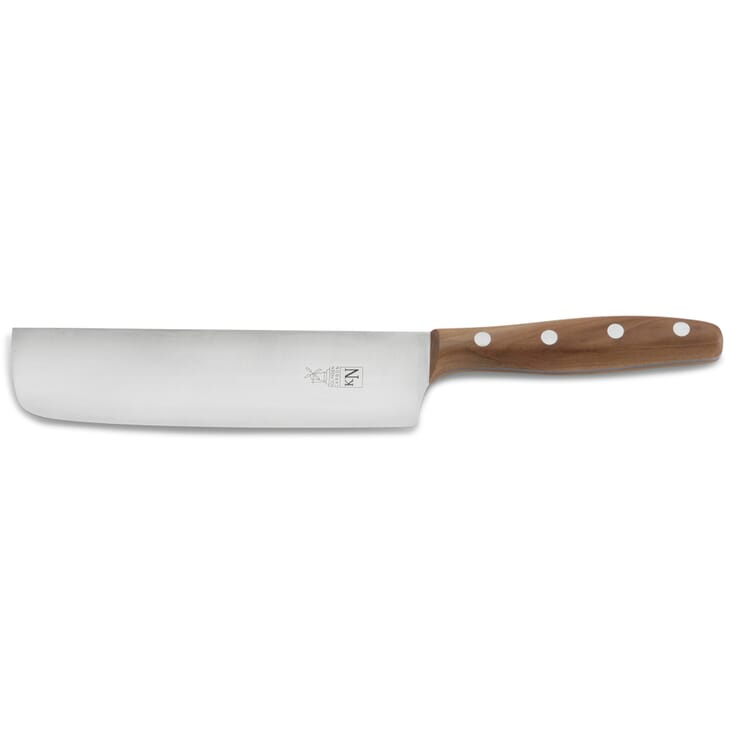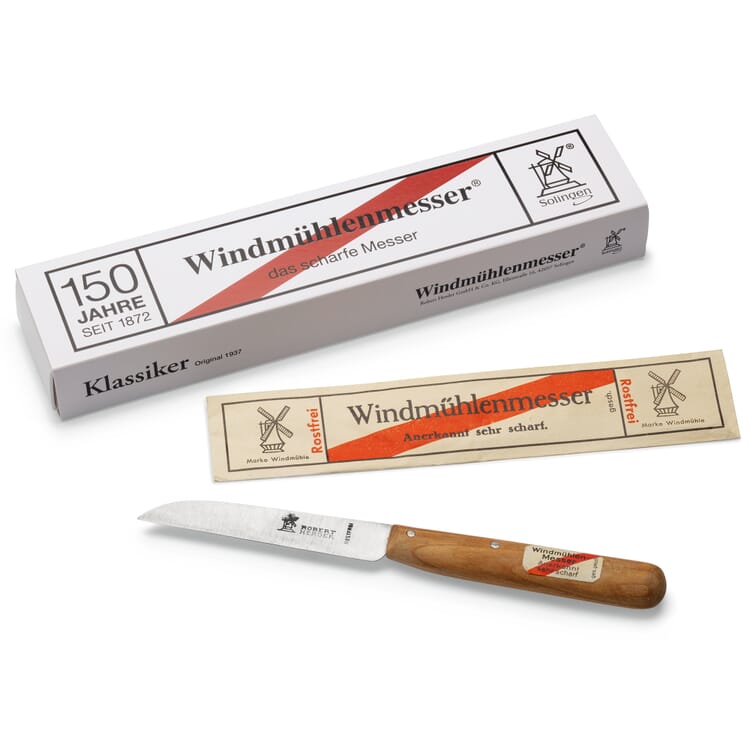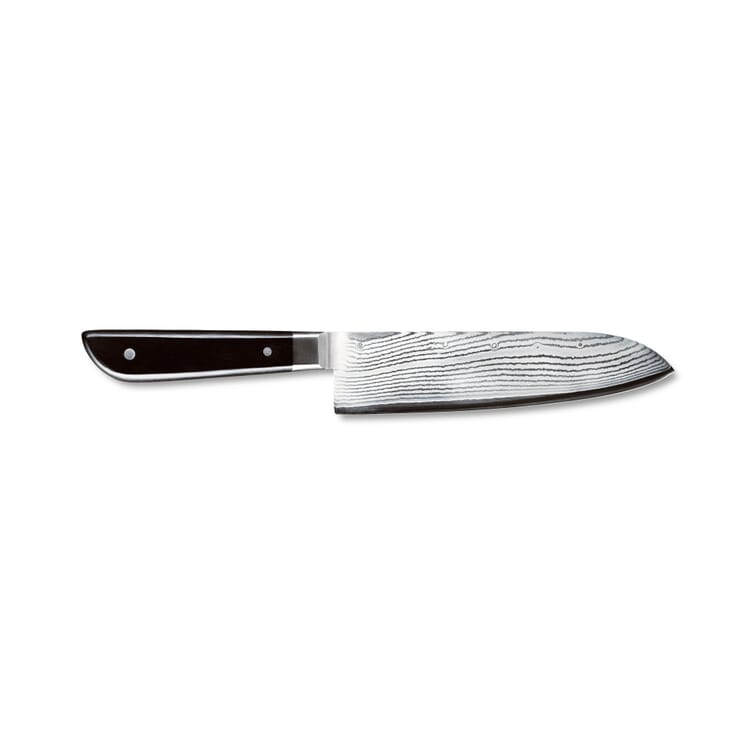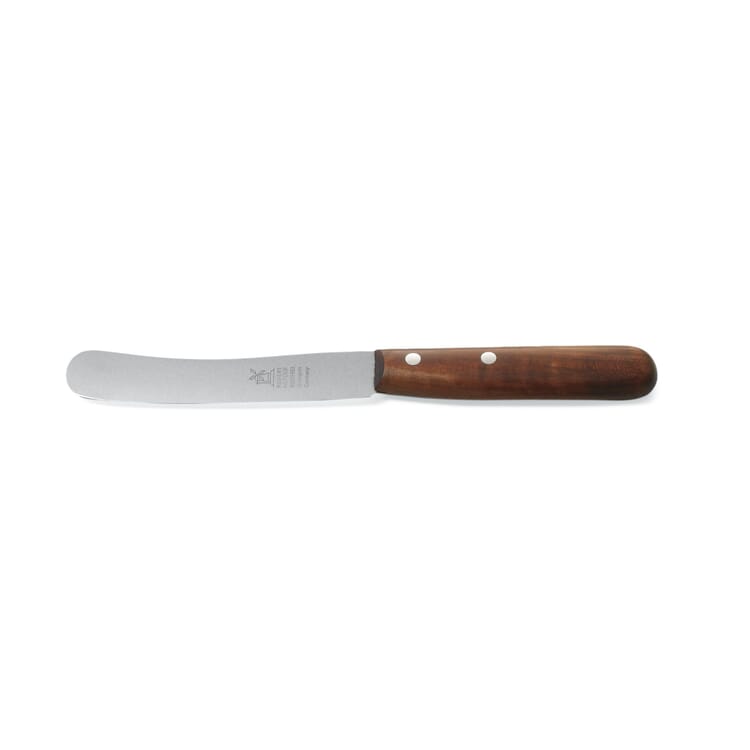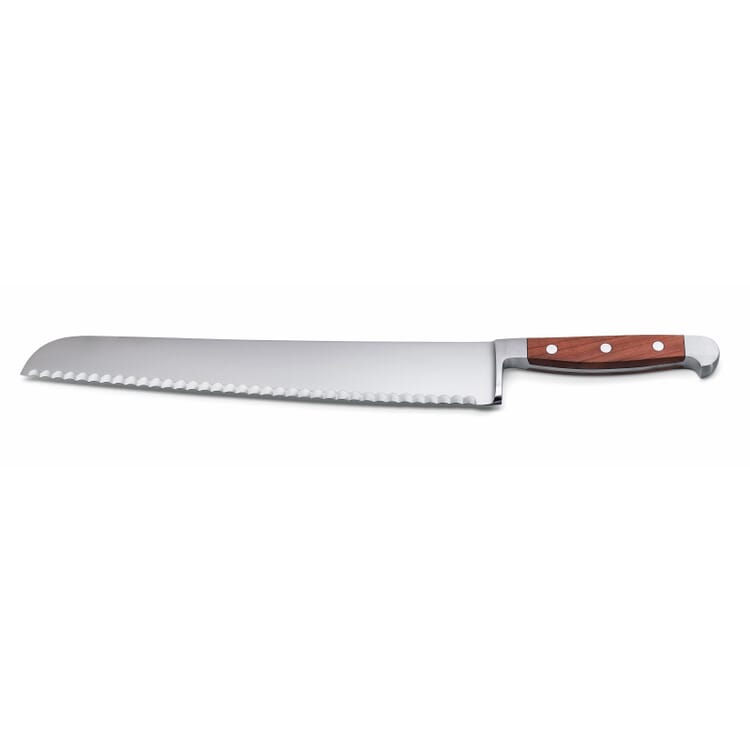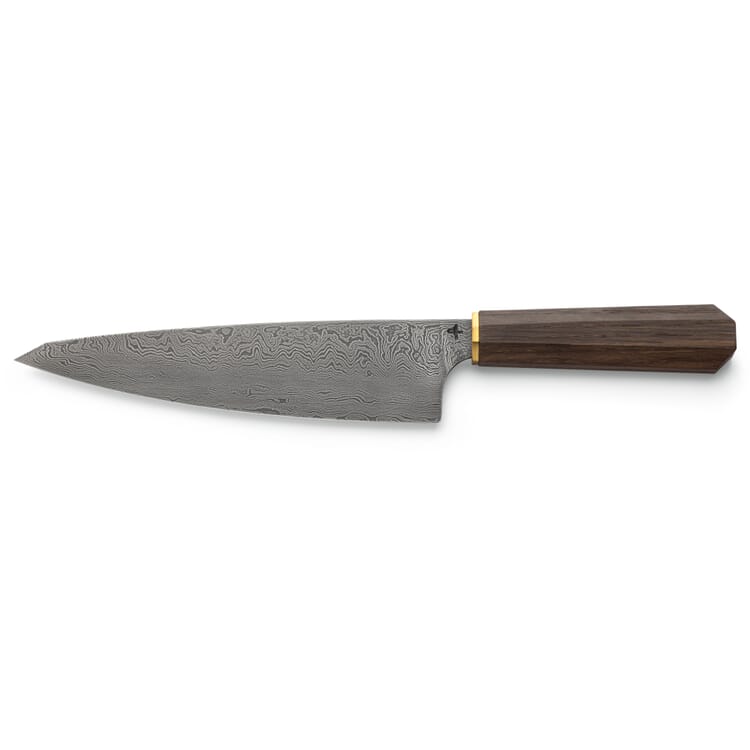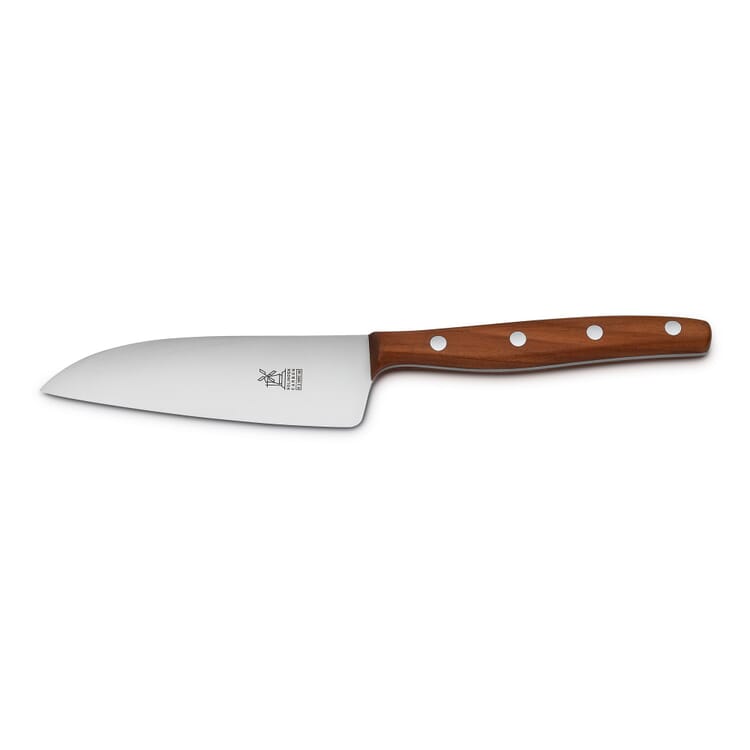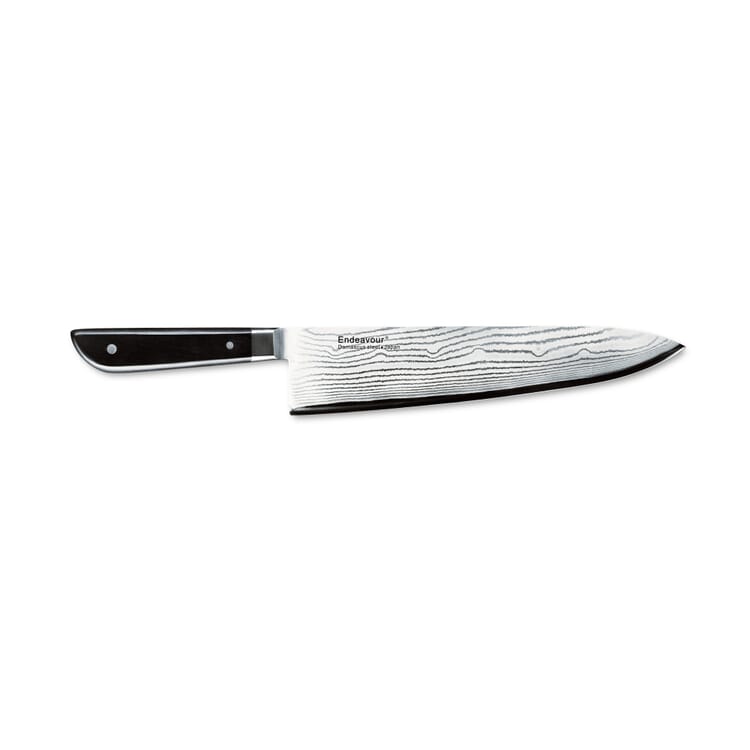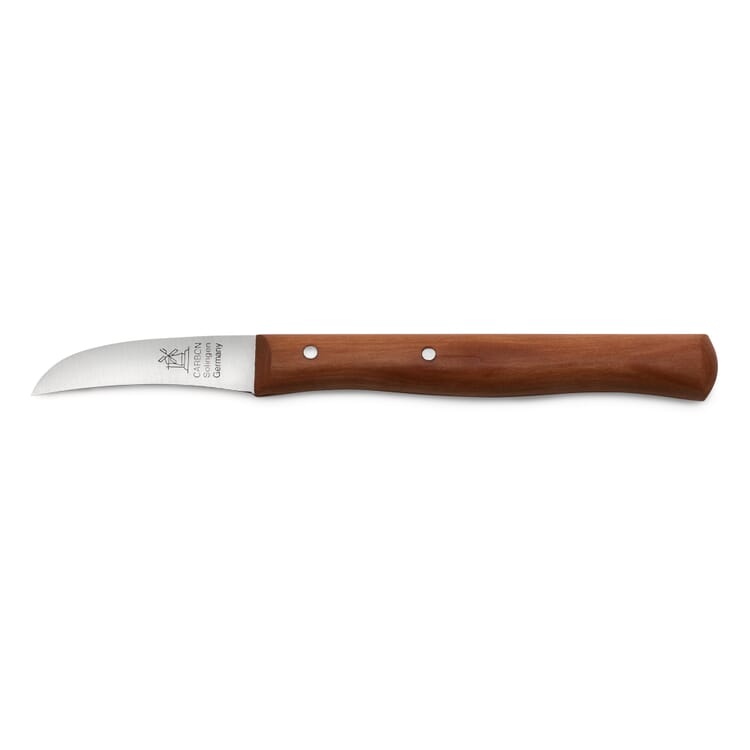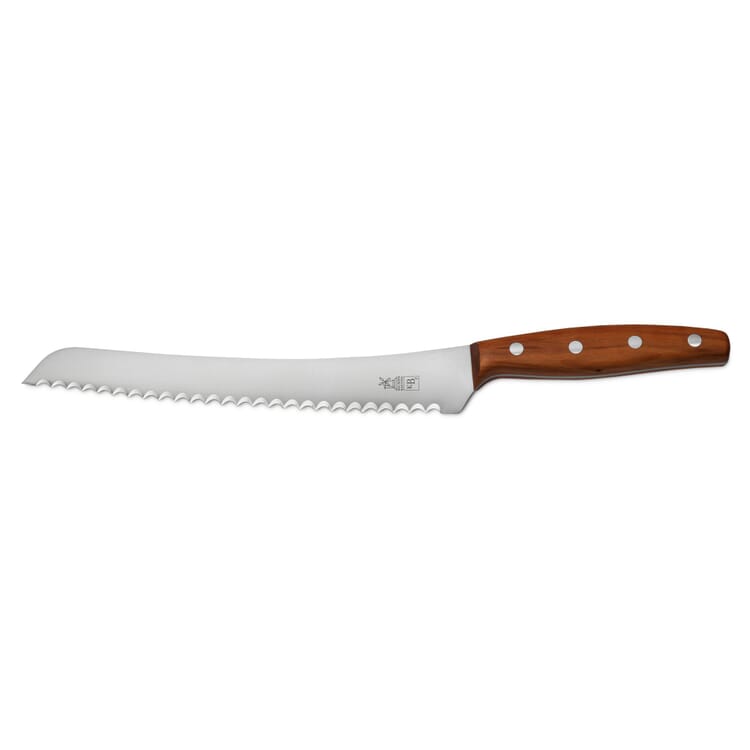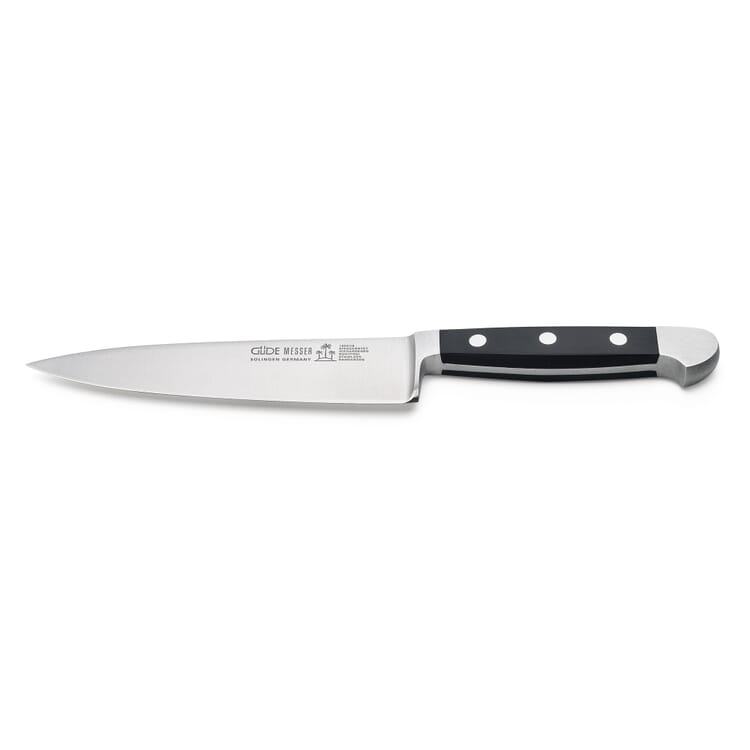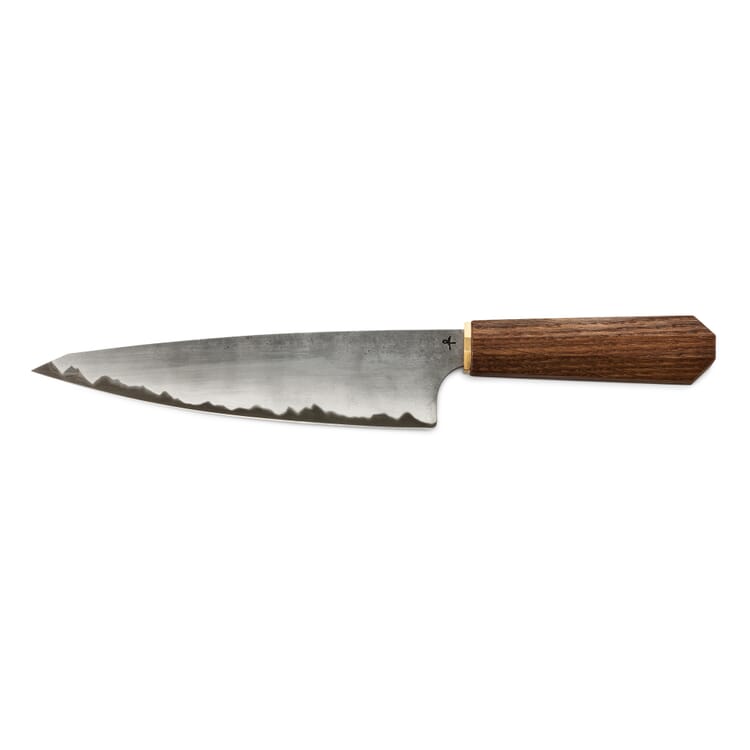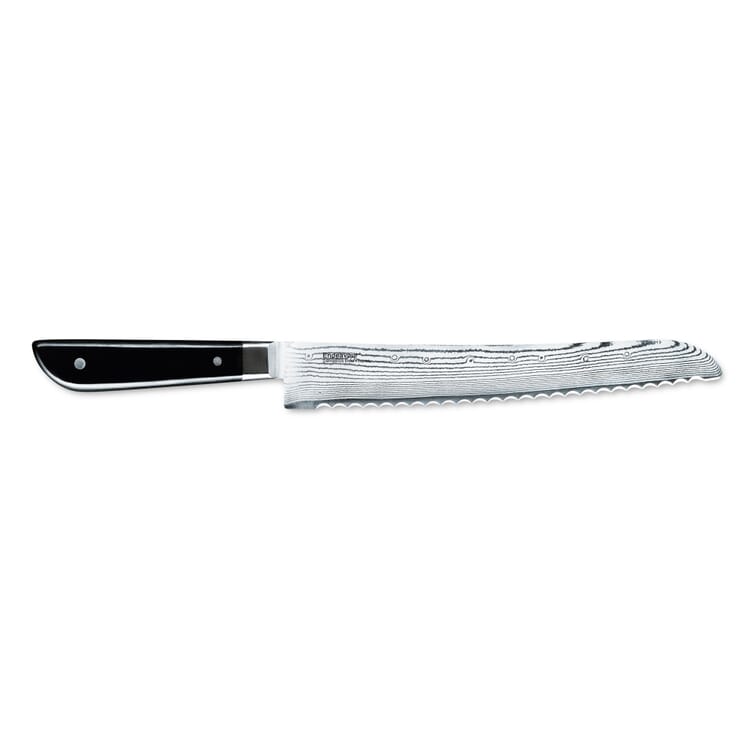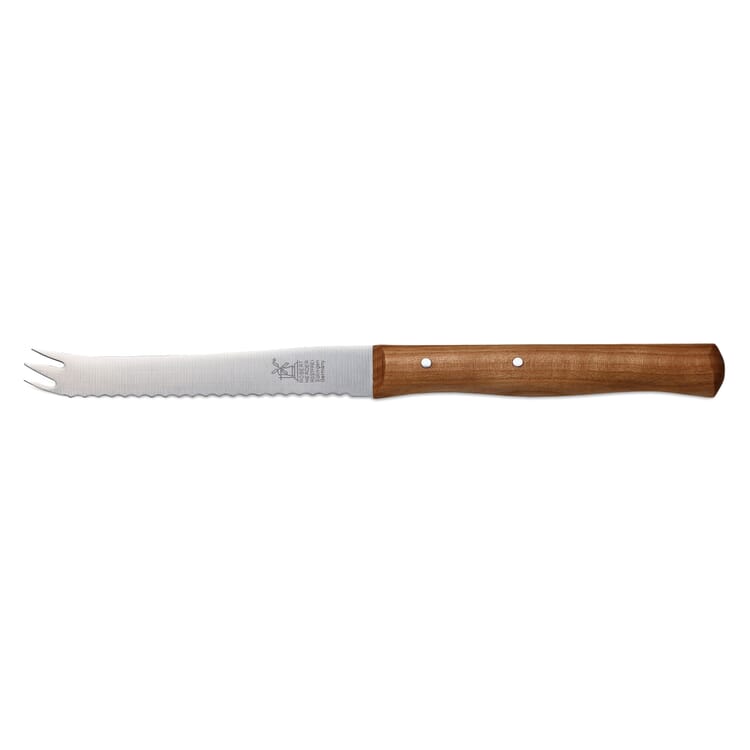Helpful tips
Good kitchen knives. Sharpened
A good kitchen knife must be sharp, stay sharp as long as possible and be easy to resharpen. What sounds simple at first, results in the implementation from the choice of material and the finishing by the craftsman. Unsurprisingly, when you think about it, this is the case with most good things. It is difficult to give clear advice in this regard, but we can provide a few guidelines that also guide us in the selection of our products. While you will have to make the decision between the different materials yourself, we have already made the selection for you of what we consider to be the best knife manufacturers in each field.
Material, manufacture and knife quality interact as follows:
- The composition of the blade steel has a decisive influence on how long a kitchen knife remains sharp. The expert speaks here of edge retention. The more carbon contained in the steel, the harder a knife is and the higher the stability of the cutting edge. Especially in the pressing cut (compared to the pulling cut), good carbon steel knives leave the competition far behind. In our range, it is the knives from Herder, those from the Hohenmoorer Messermanufaktur and the Japanese knives, which are characterized by pronounced sharpness due to the material.
- The material hardness of technical materials, and thus also that of steel, is measured in "Rockwell hardness" (HRC). The higher the value, the harder the blade. But hard steel alone does not make a sharp kitchen knife. The type of tempering, i.e. how it was hardened, the blade geometry (the shape of the grind) and the quality of the grind also have an effect on sharpness - a carbon steel blade gives the grinder far greater leeway in this respect. The material is particularly fine-grained and can therefore be sharpened in a wider variety of ways. In short: The thinner and sharper a kitchen knife is ground, the greater its edge retention - provided the material plays along.
- The other side of the coin: Carbon steel is not rust resistant and requires more dedication to care. Wear and tear is also significantly higher than with stainless kitchen knives.
- Those who would therefore prefer to worry less about their kitchen knives are well advised to use products made of somewhat softer, but therefore non-rusting steel. Here it is above all the manufacturer Güde that pushes the cutting durability of its knives to the extreme by making the highest demands on manufacturing. Chromium is the decisive element that ensures the rust resistance of a steel alloy, and the chrome-vanadium-molybdenum steel used at Güde meets the highest standards.
However, not all criteria for a good kitchen knife can be measured objectively. Subjective criteria also play a role. In addition to hardness and edge retention, corrosion resistance and wear resistance, the balance and feel of a kitchen knife can also play a role in the purchase decision. The way a knife feels in the hand is perceived differently by each buyer
- High-quality kitchen knives from Germany, especially the large and heavy models, are usually through-forged. This means that the steel runs through the entire handle. The center of gravity of a well-balanced knife is then usually at the transition between the blade and the handle, which accommodates European cutting habits, where the knife handle is often completely enclosed in the hand
- Traditional Japanese knives, on the other hand, have a different weight distribution: Here, the blade is inserted into the handle when hot and remains immovably fixed even after cooling. Because the handles are usually made of light wood, the center of gravity is on the blade - ideally in the rear quarter of the visible area as viewed from the tip. However, since Japanese cooks are accustomed to gripping their knife with their fingers on the cutting edge, this is not a disadvantage
- Whether the blade of a kitchen knife is through-forged also affects the overall weight of the knife. A heavy knife is more likely to tire the hand during prolonged use than a lighter one. On the other hand, it also gives you more in your hand, which may be the preferred option for some customers over a more lightweight version.
The agony of choice. Or: Which kitchen knives do you need?
The question of the necessary basic equipment of kitchen knives can not be answered unequivocally, because the answer depends on a wide variety of aspects. First and foremost: What and how often do I cook? A purist will possibly get by with two knives:
- The most important knife in the kitchen is a chef's knife, a large all-purpose model that masters all disciplines from cutting to weighing to chopping, and that for vegetables, spices, meat and fish. If one restricts oneself to this type of knife, one is able with it to carry out practically all the tasks that arise in the kitchen
- Only a bread knife is also indispensable, because its serrated blade, invented in its present form by Franz Güde, is able, in contrast to a smooth blade, to cut a loaf of bread cleanly and without flaking into regular slices.
There are two to three smaller kitchen knives that complete the round-up, depending on your needs:
- The shorter and narrower version of the chef's knife is the office knife. It is also a general-purpose knife, but its more manageable format makes it more suitable for smaller cuts, which are easier to process with it than with a large chef's knife. Most of the utility knives and paring knives in our range also serve similar needs. Those who frequently cut tomatoes or other vegetables or fruits with skin, on the other hand, are well advised to use a small kitchen knife with a serrated edge.
- Since the definitions of the individual knives are not clearly defined and also vary from manufacturer to manufacturer, it is best to orient yourself by the blade length and, if necessary, the blade shape (with some the cutting edge is straight throughout, some are curved towards the tip) - because even under the same name, very different kitchen knives can sometimes be hidden.
- It gets even smaller and, above all, concave when you reach for the peeling knife. This smallest knife in the bunch is particularly suitable to be able to peel round fruit and vegetables as loss-free as possible.
Knife-sharp conclusion means: All other kitchen knives are designed for significantly more specific requirements and should be purchased in addition, especially if you are regularly in the kitchen and prepare more complex dishes. These include, for example, the filleting knife or the slicing and carving knife.
Sharpening the knives. Or: How to sharpen kitchen knives?
No matter how sharp a knife is, at some point it will need to be resharpened to continue delivering optimum results. The material has a decisive influence on how easy and how quickly this work is done. Carbon steel knives are generally easier to sharpen, but also require more time and patience
Generally speaking, a kitchen knife can be sharpened in two different ways: by sharpening or grinding While for the former you use a sharpening steel (as the name already suggests quite precisely), the latter can only be done comprehensively and for all types of knives by a water whetstone. The difference is as follows: while the whetstone actually removes material and thus renews the cutting edge geometry, most sharpening steels merely straighten the worn burr of a blade, which is regularly necessary especially for softer material, where they also deliver good results as long as the cutting edge is not yet completely blunt. In principle, one can say: Whetting keeps the knife sharp longer, sharpening actually sharpens it.
Exceptionally hard kitchen knives, which include especially the Japanese models, are basically not sharpened, but only ground, because otherwise the blade can be damaged. In contrast to most European knives, Japanese knives are usually ground on one side, which allows steeper cutting edge angles that minimize friction with the material being cut and, with a little routine, allow more precise cuts to be made. This special cutting edge geometry must be taken into account when sharpening
How to use a sharpening steel, we explain here in a clear way. Using a whetstone is a little more involved and requires practice, but then gives excellent results. Before use, whetstones must be watered - the water cools the blades of the kitchen knives on the one hand and also binds the grinding dust. Grinding stones are available in a wide variety of grit sizes, just like sandpaper. The following applies: the coarser the grit and the smaller the number, the greater the material removal and the grinding effect. Finer grits, on the other hand, are used for fine grinding and polishing. Combination stones combine two finenesses in one product. A naturally occurring variant of the whetstone is the Belgian chunk obtained in the Ardennes.
To sharpen a kitchen knife on the whetstone, respectively to give it a new basic grind, there are different possibilities. Most often, it is recommended to pull the blade back and forth over the stone with a slight swing from the elbow, similar to a windshield wiper. The angle of the blade to the grindstone should be the same as the original angle of the cutting edge and varies from knife to knife. Angles in the range of 15 to 20 (more rarely 10 to 25) degrees are common. We recommend that you thoroughly familiarize yourself with the handling of the whetstone before using it. The Internet offers numerous, very comprehensive instructions for proper use.
If you do not trust yourself to grind with a whetstone, you can either use a high-quality diamond knife grinder, which prescribes the angle of the knife to the grinding surface, or (especially with high-quality models) entrust your dulled kitchen knives to a professional.
If you sharpen your knives regularly, take good care of them and store them appropriately - ideally in a knife block or on a knife rail - and ideally only use wooden boards for cutting (because all other materials damage the blade), you will enjoy your kitchen knives for a long time. Provided, of course, that they are high-quality models. But we have already taken care of that.

